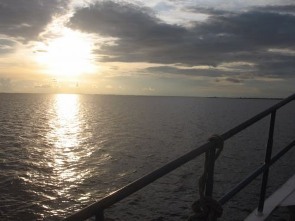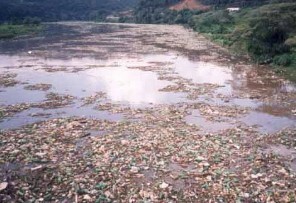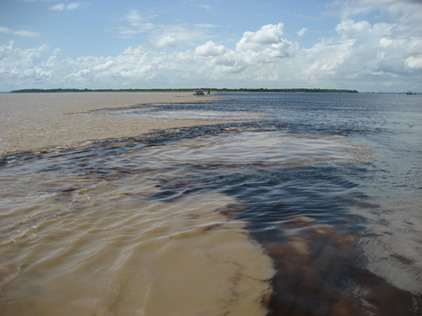Brazil has a privileged territory in terms of water potential, which holds one of the largest freshwater reserves in the world. These reserves are distributed in flowing rivers that make up long-range hydrographic basins, favoring the production of electric energy and also navigation.
Main aspects of Brazilian hydrography:

• High incidence of torrential rivers, with a great abundance of water, and perennial, due to the climate predominantly humid that prevails in the country, except the rivers of the northeastern hinterland that have seasonal rivers (temporary);
• Preponderance of mouth (where the course of a river ends) of rivers of the estuary type (the mouth opens wide without sediment accumulation) and restricted occurrence of delta-type mouth (when there is a large accumulation of sediment at the mouth of the River);
• The fluvial variations of the hydrographic basins are of the main domain of the pluvial type, however, there is the development of nivale regimes (rivers formed or influenced by waters derived from glaciers), in the case of the Amazon basin and from Paraguay;
• Reduced number of lakes;
• Predominance of rivers with exorreic drainage type (rivers that flow into the sea);
• Rivers drain their water over plateaus and depressions, resulting in great hydraulic potential.
Given the immense water abundance that Brazil has, except for the northeastern hinterland, the country is practically immune to water shortages or at least does not have major concerns in this regard, which is a great privilege, since the scarcity of this important resource has already become reality in many countries and forecasts are pessimistic about the matter, because they know that water is not infinite as previously believed previously.
Brazilians are dissipating when it comes to the level of water consumption and the proper treatment that we intended for rivers, especially those that cross different urban centers, regardless of size. Most of them are totally polluted and lifeless rivers, at least in the urban perimeter.
Do not stop now... There's more after the advertising ;)

Eduardo de Freitas
Graduated in Geography
Brazil School Team
Would you like to reference this text in a school or academic work? Look:
FREITAS, Eduardo de. "Characteristics of Brazilian hydrography"; Brazil School. Available in: https://brasilescola.uol.com.br/brasil/caracteristicas-hidrografia-brasileira.htm. Accessed on June 27, 2021.
Tick the alternative below that NO represents one of the general characteristics of Brazilian hydrography.
a) Most of the Brazilian rivers are supplied by a pluvial regime, with practically no evidence of niva or glacial supply systems.
b) Most rivers in Brazil are perennial and the minority is intermittent.
c) Brazilian hydrography is rich in rivers and poor in lakes.
The water in the atmosphere, which we call water vapor, comes from a continuous cycle. The rivers, which are formed by rainfall, form clouds as a result of their evaporation. In this way, rainwater returns to the atmosphere through water evaporation and transpiration from the plants it feeds.
The Amazon is a region of high humidity, due to the region's high temperatures and its leafy and extensive vegetation. In reality, everything is interconnected, the Amazon, its rivers and the atmosphere are like a big basin river feeding each other and linking strangely through the mechanisms of rain.

